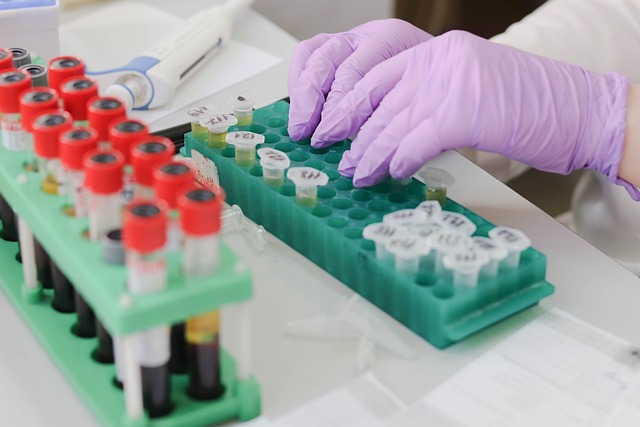If you’re in need of lab work but don’t have insurance, you may be wondering how much it’s going to cost you. Unfortunately, the answer isn’t always straightforward, as lab work costs can vary greatly depending on the type of test, the lab performing it, and other factors.
In this article, we’ll explore the costs of lab work without insurance, discussing the average prices of common tests, ways to save on costs, and alternative options for obtaining coverage.
Whether you’re in need of lab work or just curious about healthcare expenses, read on to discover everything you need to know about how much lab work costs without insurance.
Understanding Lab Work Costs
Lab work costs can vary widely depending on several factors, including the type of test, the complexity of the procedure, and the specific lab or facility where the test is conducted.
In general, lab work costs without insurance tend to be higher compared to what insurance providers negotiate with healthcare providers.
This is because insurance companies have the ability to leverage their large customer base to secure discounted rates.
It’s important to note that healthcare providers and laboratories often have different pricing structures. Therefore, the cost of lab work can vary even within the same geographic area.
Additionally, the location and setting of the lab, such as a hospital-based lab versus an independent laboratory, can also impact the overall cost.
Average Costs of Common Lab Tests
To give you a better idea of the potential costs involved, here are some estimates of common lab tests without insurance coverage:
- Urinalysis: A routine urinalysis may cost between $30 and $100.
- X-Rays: If an X-ray is required, the cost can vary significantly depending on the area being imaged. On average, an X-ray without insurance can range from $100 to $500.
- MRI or CT Scans: These imaging tests are more expensive compared to X-rays. The cost of an MRI or CT scan without insurance can range from $500 to several thousand dollars, depending on the body part being scanned.
- Biopsy: A biopsy entails extracting a tissue sample for analysis, and the expense may differ based on the type of biopsy and the intricacy of the procedure. Without insurance, the cost of a biopsy can range from a few hundred to several thousand dollars.
- Pap Smear: The cost of a Pap smear test typically ranges from $50 to $200 without insurance.
- Stool Sample Analysis: A stool sample analysis may cost between $50 and $200.
It’s important to keep in mind that these are approximate costs and can vary significantly based on various factors mentioned earlier.
Exploring Cost-Saving Options
- Negotiating with Healthcare Providers: When faced with high lab work costs, it’s worth exploring the option of negotiating directly with the healthcare provider or laboratory. Some providers may be willing to offer discounted rates or set up a payment plan based on your financial circumstances.
- Community Health Centers: Medical services are frequently provided on a sliding fee scale by community health centers, where costs are adjusted based on your income and ability to pay. These centers may have their own laboratories or collaborate with local labs, which can help reduce the expense of lab work.
- Discounted Lab Services: Several private companies and online platforms offer discounted lab services directly to consumers. These services allow you to order lab tests online and visit a partnering laboratory for sample collection. The costs through these platforms can be significantly lower compared to traditional lab facilities.
- Research Clinical Trials: In some cases, participating in clinical trials may provide access to free or low-cost lab work as part of the study. It’s important to thoroughly research and consider the risks and benefits associated with clinical trials before deciding to participate.
- Government Assistance Programs: Depending on your income and eligibility, you may qualify for government assistance programs that help cover the cost of healthcare services, including lab work.
- Seeking Price Transparency: Before undergoing any lab work, it’s a good idea to contact different labs and healthcare providers to compare prices. Many facilities now offer price transparency and can provide you with an estimate of the cost for specific tests or procedures. This allows you to make an informed decision and choose the most affordable option.
Remember, it’s essential to communicate openly with your healthcare provider about your financial situation.
They may be able to suggest alternative tests or provide guidance on prioritizing the most critical lab work based on your specific health concerns.
The Importance of Health Insurance
While exploring cost-saving options is crucial, it’s worth emphasizing the importance of having health insurance coverage.
Health insurance offers financial protection and access to a wide range of healthcare services, including lab work, at significantly discounted rates negotiated by the insurance provider.
If you currently do not have health insurance, it may be worth considering options such as:
- If you are employed, you can inquire with your employer regarding the health insurance plans available. Often, employers provide group health insurance coverage as part of their employee benefits package.
- The Health Insurance Marketplace, created under the Affordable Care Act, provides a range of health insurance plans. These plans may be subsidized based on your income, making them more economical.
- Medicaid and CHIP: As mentioned earlier, Medicaid and CHIP provide coverage for individuals and families with low income. You can check your eligibility and apply for these programs through the appropriate channels.
- Catastrophic Coverage: Catastrophic health insurance plans are designed for individuals under the age of 30 or those who qualify for a hardship exemption. These plans offer protection in case of significant medical expenses but generally have higher deductibles and lower monthly premiums.
Having health insurance not only helps mitigate the financial burden of lab work but also provides access to comprehensive healthcare services, preventive care, and ongoing medical support.
Final Thoughts
While the cost of lab work without insurance can be a concern, there are various strategies and resources available to help manage these expenses.
From negotiating with healthcare providers to exploring discounted lab services and government assistance programs, it’s important to proactively seek out options that fit your financial circumstances.
Additionally, prioritizing health insurance coverage can provide long-term financial protection and access to essential healthcare services.
Remember to reach out to healthcare providers, laboratories, and organizations directly to inquire about pricing, assistance programs, and any available discounts.
By being proactive and informed, you can navigate the world of lab work costs without insurance more confidently, ensuring that your health needs are addressed without excessive financial strain.







